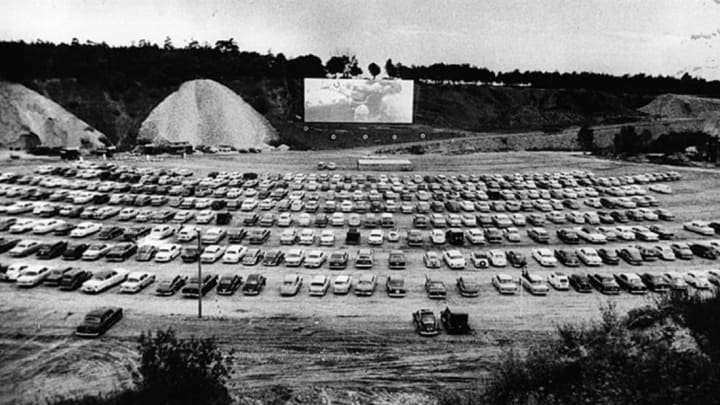80 Years of Drive-in Theaters
By Bryan Dugan

The outdoor movie theater, born in 1933 in Pennsauken, N.J., turned 80 on June 6. What started as an experiment from chemical company magnate Richard M. Hollingshead Jr. changed the way movie-goers experienced motion pictures. Hollingshead started small. Really small. His prototype consisted of a screen nailed to trees in his backyard, a radio behind the screen, and a 1928 Kodak projector positioned carefully on the hood of his car. And this all happened from his driveway.
Hollingshead got the idea from his mother, a tall woman who found traditional theater seats to be uncomfortable.
After receiving a patent for his idea, Hollingshead expanded, opening up the drive-in theater in Pennsauken with 400 car slots and a 40-by-50-foot screen. The first film ever shown was Wives Beware. Hollingshead chose to screen the film because it had already been in theaters for a few weeks, and he didn’t want any conflict with major releases at other theaters.
Getty Images
Back then, going to a drive-in was about more than just watching a movie.
Hollingshead’s theater only operated for three years, but the concept caught on elsewhere. Drive-ins' popularity spiked in the late '50s and early '60s, especially in rural areas.
“Going to the drive-in is about the experience. … It was not about the movie,” filmmaker April Wright told USA Today after completing a documentary about the rise and fall of drive-ins.
Parents jumped on board because they could shuttle the family, and teens loved the idea because it was ideal for dates. And some drive-in owners tried to appease both audiences, showing both family-friendly entertainment and B films—which grew more trashy with time.
At the height of the outdoor concept, 4000 drive-ins were being operated. Over the years, though, the numbers have waned. This year, the number sits at 357. Only 1.5 percent of movie theaters are drive-ins; at the height of their popularity, drive-ins comprised 25 percent of all theaters.
Courtesy of Flickr user Chuck Wilson
In the '70s, the fad started to decline, largely because of the gas crisis and the increasing value of real estate. Eventually cable TV, at-home movies, malls, and even bucket seats in cars took their toll.
But one good sign about the future? Drive-in owners today who have made the switch to digital projection are obviously in for the long haul, making a commitment to stick around “for 20 or 30 years,” Wright said.
Playing on the nostalgia of the 80th anniversary, Instagram launched a special page to feature its users’ drive-in experiences.